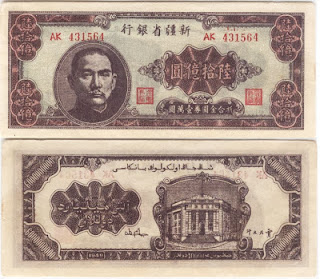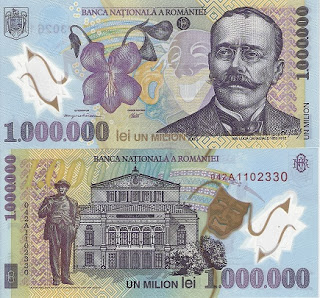| Image Source |
Invented by Swiss watchmaker Antonie Farve in 1796, music box are typically a stand alone, self-playing, musical instrument wherein tuned metal teeth on a steel comb are plucked by manner of a metal pin or depression set in a musical composition. It has five types namely: Cylinder Music Box, Disc Music Box, Reuge Music Box, Thomas Kinkade Music Box and Sankyo Seiki Music Box.
Because they are now rarely manufactured, they are considered as a collector’s item. If you want to start your collection of musical gifts like music boxes, there are actually a few types that you can get. You can choose from a wide array of music boxes since they come in many styles, shapes and sizes. You can get traditional music boxes, vintage, and brand name music boxes as well.
Why collect music boxes?
- a musical gift suitable for all ages
- can teach different musical sounds for children
- a perfect gift for all occasions
- a highly-loved collectible for all collectors
- an item worthy to be treasured for
Key dates in Music Box History
1796 - First real music box mechanism appears, normally credited to a Swiss watchmaker named Antonie Farve. In this model, metal pins strike a set of tuned laminated teeth making tones without the use of bells or strings. This design allowed the miniaturization of mechanical music works.
1802 - A flat type of mechanical movement was created using a flat disk inset with pins. It allowed watch sized musical trinkets to have a greater range. • The first cylinder type music boxes appear. Where a clock might only have about 100 pins, these music boxes could have up to 10,000 pins greatly improving range and playtime.
1810 -1815- Music box production moves from individual craftsmen to a cottage industrial model with watchmakers and metalworkers creating parts in their homes before trading in bulk orders for assembly in small workshops.
1830-1860- Music box production ranged from small to mid sized. Key wound mechanics inside plain wooden boxes became popular. The craftsmen of this time were more concerned with tonal quality than aesthetic embellishment.
1860-1870- Music boxes grow in size to include more ornate boxes and larger playing ranges and times. This is largely due to the international expos of 1851 and 1862. • Music box production becomes big business.
1875- First production line factory for music boxes in St Croix.
1876- Organettes begin commercial production in both Germany and the United States.
1870-1890 - Cylinder type music box production was at its height with all sizes and shape of musical products. Extensively inlaid cases and multiple cylinders, some removable, others on a revolving base, mark this era as the most technically challenging period for cylinder type manufacturing.
1886- First interchangeable disk type music box is made in Germany.
1889 - Paul Wendland of Symphonion Musikwerks patents the star wheel which serves as the linchpin of disk type music boxes.
1894- By this time Symphonion Musikwerks had split into Symphonion and Polyphon Musikwerks, and Regina in America accounting for the majority of music box manufacture. They are commonly referred to as the “Big 3” in collectors’ circles.
1895- Due to the increased volume produced by disk type music boxes and aggressive marketing by the top three manufacturers, cylinder type box companies were put almost entirely out of business.
1895-1905 - Height of disk type music box production with multiple sizes and operation styles being produced for use in the home, as well as in taverns, and in public waiting areas.
1905-1922- The phonograph begins production and captures the majority of home audiences. The production of music boxes dwindles bit by bit with the eventual merger or bankruptcy of the main manufacturing companies.
Types of Music Boxes
1. Cylinder Music Box
| Image Source |
The disc music box emerged was invented from Germany during in the late 19th century. It was less expensive than the cylinder music box because it was made of cheaper materials. One is able to change the tune of a disc music box by simply changing the disc.
3. Reuge Music Box
The Reuge music box was invented by Charles Reuge in 1865. There are three different collections of the Reuge music box: 1865, Lounge and Studio. The 1865 collection is considered to be the classic line of Reuge boxes because they are made of the finest wood. The Lounge Collection includes the more practical boxes; they were originally made to improve the sound quality of music boxes. The Studio collection is the most modern and sophisticated line of boxes.
4. Thomas Kinkade Music Box
Thomas Kinkade is an American artist who is known for his pastoral and idyllic paintings. His music boxes are characterized by their inspirational and Christian themed designs.
5. Sankyo Seiki Music Box
Sankyo Seiki is a company based in Japan that has been producing music boxes since the mid-20th century. Sankyo music boxes are famous for their unique tunes. Sankyo used the latest automation technology to mass produce affordable music boxes. Today, they are one of the largest music box manufacturers. The organette type is a combination of the cylinder type music workings with a reed organ housing. The cardboard or cylinder would open valves releasing air through and over reeds to create sound.
Sankyo has grown to become the biggest manufacturer of music boxes in the world and supplies music box hardware to other manufacturers and distributors. Sankyo now sells licenses for its music box tunes to cellular phone companies for use as ring tones. Many of the vintage Japanese music boxes you will find today are made by Sankyo.
Sources:
http://en.wikipedia.org/wiki/Music_box
http://www.museums.iastate.edu/MusicBoxes.pdf
http://www.ehow.com/facts_5585884_types-music-boxes.html
http://antiques.lovetoknow.com/vintage-japanese-music-box
3. Reuge Music Box
| Image Source |
The Reuge music box was invented by Charles Reuge in 1865. There are three different collections of the Reuge music box: 1865, Lounge and Studio. The 1865 collection is considered to be the classic line of Reuge boxes because they are made of the finest wood. The Lounge Collection includes the more practical boxes; they were originally made to improve the sound quality of music boxes. The Studio collection is the most modern and sophisticated line of boxes.
4. Thomas Kinkade Music Box
| Image Source |
Thomas Kinkade Sunday Evening Sleigh Ride Music Box
5. Sankyo Seiki Music Box
| Image Source |
| Image Source |
Sources:
http://en.wikipedia.org/wiki/Music_box
http://www.museums.iastate.edu/MusicBoxes.pdf
http://www.ehow.com/facts_5585884_types-music-boxes.html
http://antiques.lovetoknow.com/vintage-japanese-music-box












.jpg)


_1,000,000_Dinara.jpg)



